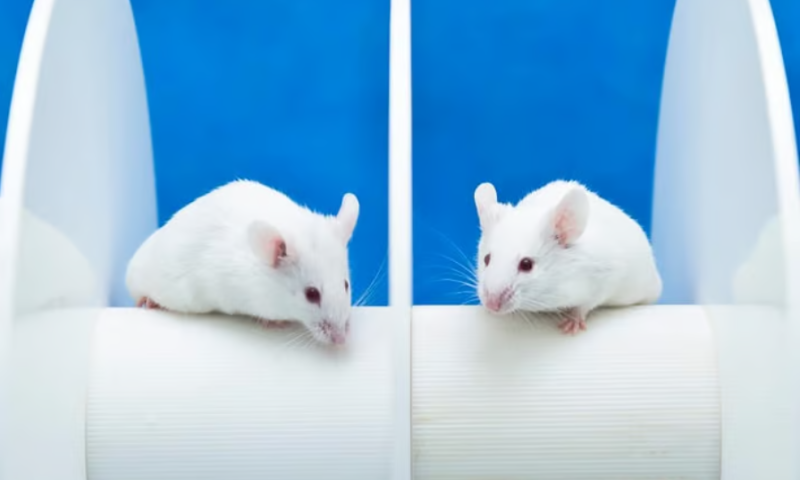There’s no question that hormones affect the brain—and if they affect the brain, that means they can affect behavior, too. That logic has long justified leaving female mice out of neuroscience studies, as scientists worried that hormone fluctuations would introduce confounding variables into their experiments.
But while that may have been the prevailing thinking, the data were less certain. Now, a new study led by researchers from Harvard School of Medicine suggests that hormone fluctuations don’t affect the behavior of female mice to the degree that it could influence study results—and that, in fact, they may be more stable than their male counterparts.
“I think this is really powerful evidence that if you’re studying naturalistic, spontaneous exploratory behavior, you should include both sexes in your experiments—and it leads to the argument that in this setting, if you can only pick one sex to work on, you should actually be working on females,” Sandeep Robert Datta, M.D., Ph.D., who co-led the study, said in a press release.
In the new study, published March 7 in Current Biology, the researchers described how they used artificial intelligence to analyze the behavior of separate groups of 16 male and 16 female mice following an open-field test. Neuroscience researchers often use open-field tests to learn how various substances or conditions impact natural rodent behavior. They’re pretty much exactly what they sound like: Mice are placed in an open container and left to explore for a set amount of time while their behavior may be captured on video. Scientists then analyze the mice’s behavior, for example, the speed of their movement or how frequently they performed postures associated with anxiety.
In this case, the scientists conducted open-field tests for 20 minutes daily over 15 consecutive days, simultaneously tracking where the female mice were in their estrous cycles. They recorded the tests in 3D videos, then ran the footage through a machine learning program called motion sequencing, or MoSeq, to see what patterns they could find.
While they did find very subtle changes in the behaviors of individual female mice across their estrous cycles phases, MoSeq wasn’t able to predict where in its estrous cycle a mouse was based on a recording from any single session. But the tool could identify an individual female mouse based on its behavior alone more than 85% of the time across all the sessions, suggesting that the individual behavior differences were much more apparent than estrous cycle changes.
To offer more perspective, the researchers noted that previous experiments showed that mice treated with small doses of psychoactive drugs had far greater behavior changes than the ones they noted between individuals. “Thus, from a practical perspective, the impact of estrous state on exploratory behavior is likely to be negligible,” the scientists wrote in their paper.
The male mice, on the other hand, were more erratic. Though MoSeq could also pick out an individual male mouse based on its behavior, the variability of the mouse’s behaviors between sessions was greater than in the females and even increased over time. They also exhibited larger differences between individuals.
“Taken together, our findings argue for the inclusion of both sexes in experiments querying behavior and support the perspective that females—rather than males—should be the default sex used in studies of exploratory behavior in circumstances in which both sexes cannot be tested,” the researchers concluded.
The results come with caveats. First, only one strain of mouse was used in the experiment, and they were tested in only one setting—a setting that didn’t come with any clear task or goal, the scientists noted. Further, the scope of the study didn’t include experiments that could help the researchers understand why they found as much behavioral variability between individual mice as they did, something that will need to be investigated in future work, they added.
The paucity of female mice in animal studies draws parallels with the historical lack of female subjects in clinical trials—which, despite the pharmaceutical industry’s focus, continues to persevere, as evidenced by an underrepresentation of women in research on COVID drugs and vaccines.
“This bias starts in basic science, but the repercussions are rolled into drug development, and lead to bias in drugs being produced, and how drugs are suited for the different sexes,” lead author Dana Levy, Ph.D., said in the press release.

